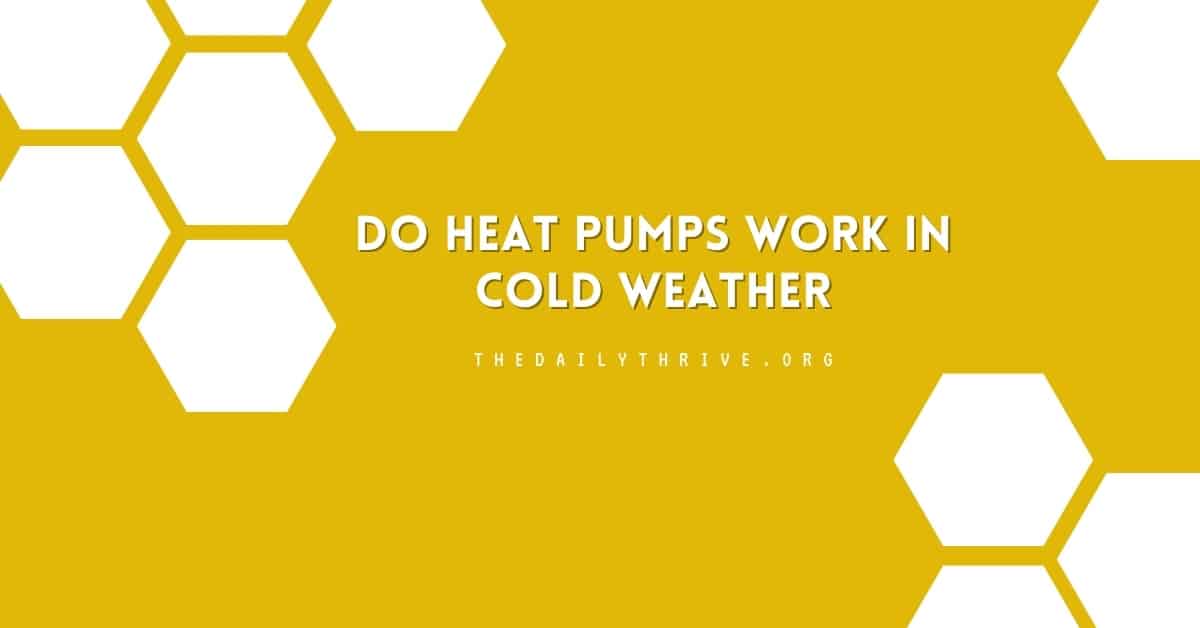Heat pumps are an eco-friendly, efficient, cost-effective way to heat your home. They work by extracting heat from the air outside and bringing it into your home. But, as temperatures drop, you may wonder if heat pumps work well in cold weather.
Heat pumps can heat your home more than twice as well as gas or standard electric heating, even when cold outside. Don’t worry about whether or not a heat pump can keep your house warm. New heat pump technology is ready for your cold winter and can heat your home with much less electricity than traditional heating methods.
How Do Heat Pumps Work?
A heat pump is a device that can both heat and cool your home. It uses a refrigerant cycle to extract heat from the air outside and transfer it inside.
In the summer, the process is reversed, and the heat pump extracts heat from inside your home and releases it outside. Heat pumps do not generate heat but rather move it from one place to another.
How do heat pumps work in cold weather?
Heat pumps work in cold weather by extracting heat from the outside air and transferring it into your home. As the temperature drops, the heat pump will have to work harder to extract heat from the air. This is because less heat is available in the air when it’s colder outside.
However, modern heat pumps are designed to operate efficiently in cold temperatures using advanced technology to extract as much heat as possible from the air.
How well does a heat pump work in cold weather?
The efficiency of a heat pump decreases as the temperature outside drops. The colder it gets, the harder the heat pump is to extract heat from the air. However, modern heat pumps are designed to operate in cold temperatures. Some models can continue to provide heat even when the temperature outside is as low as -15°C.
The effectiveness of a heat pump in cold weather will depend on the specific model and the size of your home.
What temperature is too cold for a heat pump?
There is no specific temperature that is too cold for a heat pump. Heat pumps are designed to work in cold weather. Modern models can operate effectively even when the temperature outside is as low as -15°C.
As the temperature drops, the heat pump’s efficiency will decrease, and it may not provide enough heat to keep your home warm. In these cases, you may need a backup heat source.
Why may you need a backup heat source?
Even though heat pumps can operate in cold weather, there may be times when a backup heat source is necessary. For example, during extreme cold spells, the heat pump may not be able to keep up with the demand for heat, and your home may feel chilly. In these situations, a backup heat source, such as a furnace or heater, can supplement the heat pump and keep your home warm.
What to Look For in a Heat Pump for Cold Weather?
Suppose you live in a climate where temperatures regularly drop below freezing. In that case, you will want to look for a heat pump designed to operate in cold weather. Look for a model with a high Heating Seasonal Performance Factor (HSPF), which measures the heat pump’s efficiency in heating mode. Also, consider the size of the heat pump, as a unit that is too small will struggle to keep your home warm in cold weather.
In addition to the HSPF rating, look for heat pumps with advanced features such as variable speed compressors and defrost control. Variable-speed compressors can adjust the heat pump output to match your home’s heating needs. At the same time, defrost control prevents ice buildup on the outdoor unit, which can decrease the heat pump’s efficiency.
You may also want to consider a dual fuel system, which combines a heat pump with a furnace or other backup heat source. This system can automatically switch between the two heating sources based on the temperature outside, providing efficient and effective heating no matter how cold.
Heat pumps can work in cold weather, but their efficiency will decrease as the temperature drops. You can enjoy efficient and effective heating throughout the winter months by selecting the right heat pump and using it in conjunction with a backup heat source when needed.






